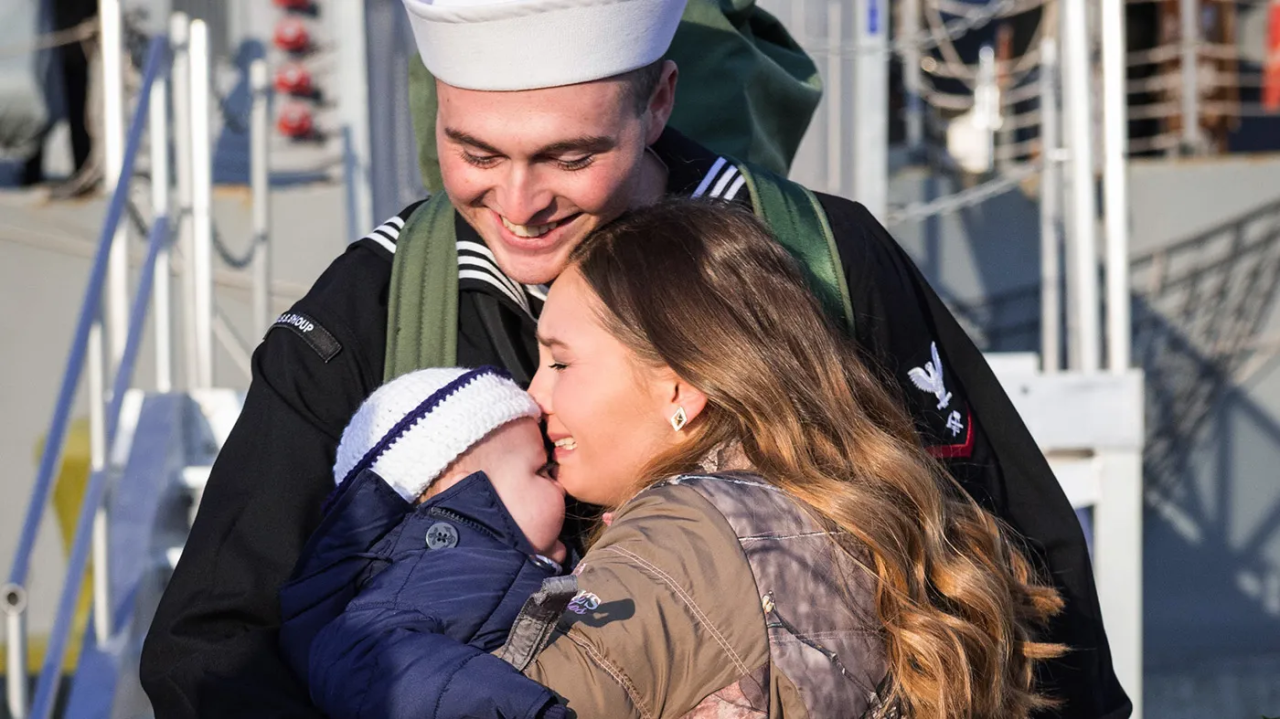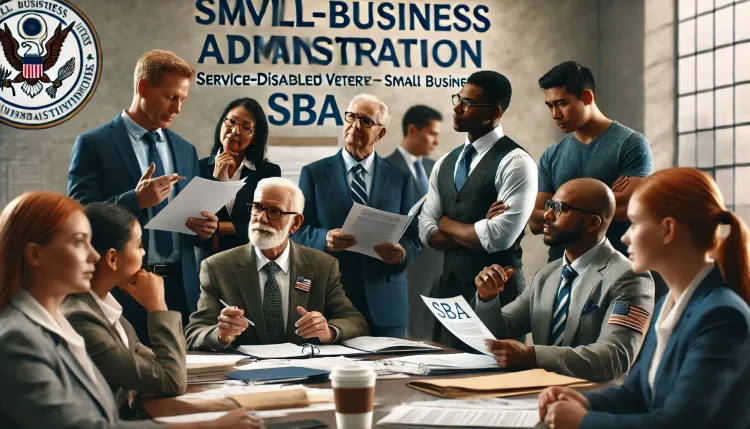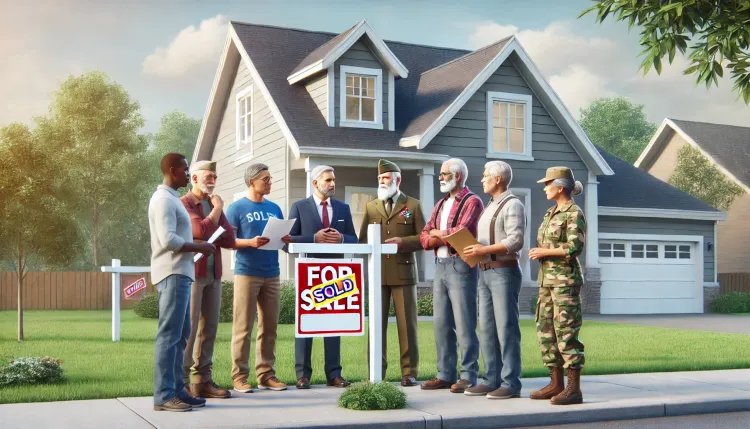Supporting Veterans & Spouses: VA's New Grant Program Takes Effect June 12, 2024 - Learn More

The Department of Veterans Affairs (VA) finalized the implementation of the Veteran and Spouse Transitional Assistance Grant Program (VSTAGP), established under the Johnny Isakson and David P. Roe, M.D. Veterans Health Care and Benefits Improvement Act.
Effective June 12, 2024, this new grant program aims to empower veterans and their spouses by providing comprehensive outreach and support services through a transparent and accessible grant application process. The final rule outlines general grant application procedures, with clarifying changes made to address public comments and ensure widespread accessibility. By fostering innovative outreach strategies and partnerships, VSTAGP will enhance transitional assistance and help veterans and spouses thrive in their post-service careers and communities.
The final rule was published in the Federal Register, the U.S. Government's daily journal where agencies like the Department of Veterans Affairs (VA) propose and formalize regulations. Once published, these rules are codified in the Code of Federal Regulations (CFR), making them accessible for public reference. The publication of the VSTAGP rule ensures transparency and provides veterans, spouses, and service providers with a clear understanding of the program's guidelines, enabling them to navigate the grant application process effectively and maximize available support.
The 30-day comment period on the proposed rule to establish the Veteran and Spouse Transitional Assistance Grant Program (VSTAGP) ran from July 5 to August 4, 2023, during which the VA received four comments and was viewed nationally 986 times. The full comments can be found at the end of this article.
Additionally, this rulemaking seeks to benefit and improve the employment rate and the outcome of participants as required by the upcoming Notice of Funding Opportunity (NOFO). Grantees will work with participants to identify employment barriers, develop individualized employment plans, and link participants to necessary support services such as health care, housing, and rehabilitative services as needed. Program effectiveness will be evaluated based on three critical performance measures: (1) number of enrolled participants (2) placement rate and (3) average hourly wage at placement. To evaluate grantees progress, they will be required to provide quarterly performance reports to monitor their performance, measure the number of participants serviced, evaluate the overall effectiveness of the VSTAGP, make data-driven policy decisions and report the program effectiveness to Congress. (Regulatory Impact Analysis for Regulation RIN 2900-AR68(P))

Navigating the Application Process
For 2024, the VA requested an additional $6.9 million for the program, which includes funding for an increase of three FTE and approximately $5 million in grants awards. Eligible recipients are described as the following. To apply for a grant, an eligible entity must submit a complete application package to VA, as described in the NOFO. There will be a limit of one application per submitting organization serving the same participant population and in the same geographic service area. Applications will be accepted only through www.grants.gov.When funds are available for VSTAGP grants, VA will publish a Notice of Funding Opportunity (NOFO), so keep an eye out.
(1) State government;
(2) County government;
(3) Local government;
(4) Institution of Higher Education (Private nonprofit and public only. NOTE: For-profit companies are not considered eligible);
(5) Indian/Native American Tribal government (federally recognized);
(6) Nonprofit organization; or
(7) Faith-based organization.
Additionally, participants are described as the following:
Participant - means a former member of the U.S. Armed Forces who was separated, retired, or discharged from the U.S. Armed Forces, or spouse of such former member, who receives services for which a VSTAGP grant is awarded.
Spouse - means an individual lawfully married to a former member of the U.S. Armed Forces who was separated, retired, or discharged from the U.S. Armed Forces.
To apply for a grant, an eligible entity must submit a complete application package to VA, as described in the NOFO. There will be a limit of one application per submitting organization serving the same participant population and in the same geographic service area. Applications will be accepted only through www.grants.gov.
Public Commentary on the Now Final Rule
Comment on AR68-Proposed Rule-Howell, Robert
I am strongly in favor of expanding access to federal grants for organizations oriented towards providing transition assistance for service members and their families. Services like resume assistance, interview preparation, and help with job searching can have an outsized impact on the success of a veteran's transition. As a transitioning veteran myself, I can personally testify to the quality and efficacy of these programs. Federal funds leveraged towards these services will greatly facilitate veterans giving back to their communities and participating in the economy. After years of military service, the transition period can be stressful and complicated for not just service members but their family members as well. Federal grants for transition assistance programs will increase the impact of these programs and their ability to service a greater portion of the transitioning veteran population. Currently, there exists just a small handful of transition assistants servicing bases of tens of thousands of active duty servicemembers. For individuals executing orders away from major installations, this lack of assistance is even more acute. Younger servicemembers especially are negatively impacted by the lack of transition assistance. These are the young individuals who would benefit most from being taught how to write a resume or what to expect in a job interview. An organizations-based approach to this problem would ensure that assistance is available more broadly and the quality of that assistance is improved. Transitioning veterans have a multitude of skills and aptitudes with which to positively impact the national economy and their communities. An increase in federal grant opportunities towards transition assistance would ensure that veterans and their families have the tools they need to successfully transition into a productive and fulfilling civilian life.
Comment on AR68-Proposed Rule-DMeza, Gilbert
In order to support this proposed transition assistance program, grant recipients must have access to separating servicemembers and recently separated servicemembers. DoD and VA should collaborate to encourage those enrolled in the DoD Transition Assistance Program to sign up for the VA's counterpart program. Servicemembers should identify geographical areas where they are considering to move upon separating from the military. The sign up should also offer (optional) to capture specific interests for education, employment, home purchase and other key pieces of information the grant recipients could use to provide tailored services to separating servicemembers. Otherwise, large parts of the grant funding will be spent on advertising and administrative overhead rather than on the transition services truly needed by the separating servicemember.
Comment on AR68-Proposed Rule-Victoria, Kenny
Dear Department of Veterans Affairs,I am writing in response to the proposed rule AR68, concerning the establishment of the Veteran and Spouse Transitional Assistance Grant Program (VSTAGP). As a veteran support organization, we have years of experience serving veterans and their spouses in transitioning back to civilian life. We are providing comments on behalf of our organization, focusing on areas where we believe the rule can be further refined to better serve our veterans and their spouses.The regulatory action that we would like to address pertains to the grant application procedures and evaluative criteria (as detailed in the federal register document). While we laud the VA's efforts to allocate funds towards helping veterans transition back to civilian life, we propose that the application process and evaluative criteria be made more transparent, with clear benchmarks for successful funding.Our recommendations are twofold:Make the grant application process more accessible: Simplifying the process and offering guidance or resources to help applicants navigate the process can significantly increase the reach of these grants. Establish clear and comprehensive evaluative criteria: Detailed and transparent benchmarks should be set for funding to ensure that grants are distributed to the organizations that can provide the most impact.Our organization has firsthand experience dealing with the complexities of grant applications, and we have observed that this can often deter eligible organizations from applying. By streamlining the process and providing clear instructions and support, we can ensure that these funds are reaching a larger audience, thus creating a broader impact (Hannah et al., 2020).Moreover, the establishment of clear evaluative criteria is crucial to maintaining the integrity of the grant distribution process. Our organization, along with others, would greatly benefit from understanding the specific metrics or benchmarks that the VA will use to assess applications (Miller & Rivera, 2019). This would not only make the process more transparent but would also allow organizations to tailor their applications more effectively to meet these criteria. In conclusion, while we support the establishment of the VSTAGP, we believe that an accessible application process and clear evaluative criteria are key to its successful implementation. By implementing these recommendations, we can ensure that the program serves the maximum number of veterans and their spouses, and that the funds are utilized most effectively. We hope that our insights will be taken into consideration in finalizing the rule. Sincerely, Kenny Victoria References: Hannah, S. A., Lester, H., & Tribett, E. (2020). Navigating the Grant Application Process: Challenges and Solutions. The Journal of Nonprofit and Public Affairs, 2(1), 50-68. Miller, T., & Rivera, J. D. (2019). The Importance of Clear Evaluation Criteria in Nonprofit Grant Applications. Nonprofit Management and Leadership, 30(1), 123-140.
Comment on AR68-Proposed Rule-Victoria, Kenny
Dear Department of Veterans Affairs, As a veteran and a current graduate student, I am highly interested in the AR68-Proposed Rule for the Veteran and Spouse Transitional Assistance Grant Program (VSTAGP). My personal experiences transitioning from military to civilian life and the impact of such transition services motivate me to engage in this discussion. Throughout history, veterans' challenges have been acknowledged by both Congress and the Department of Veterans Affairs (VA). Legislation such as the GI Bill in 1944, the Veterans' Rehabilitation and Education Amendments in 1980, and more recently the Johnny Isakson and David P. Roe, M.D. Veterans Health Care and Benefits Improvement Act in 2020, sought to ameliorate these difficulties. The VSTAGP aims to address gaps in service provision for transitioning veterans and their spouses by funding external organizations. This represents a shift from direct VA services to a grant-funded model, affecting veterans, their spouses, and service-providing organizations.While I strongly support the intent of VSTAGP, I believe the process can be improved. From my personal experience as a veteran and my current experiences as a student navigating financial aid, I've learned how complex and intimidating application processes can be. A simplified and transparent application process can increase engagement from eligible organizations (Hannah et al., 2020). Additionally, clear and comprehensive evaluative criteria ensure the integrity and effectiveness of the grant distribution process. Such guidelines provide a roadmap for organizations, enabling them to craft effective applications (Miller & Rivera, 2019). For these reasons, I recommend resources and guidance for applicants and explicit criteria for evaluating applications. In conclusion, I urge the VA to enhance the accessibility of the grant application process and clarify the evaluative criteria. With these improvements, I am confident that the VSTAGP can better serve its intended beneficiaries, contributing meaningfully to the transition of veterans and their spouses into civilian life.Kenny Victoria





Member discussion